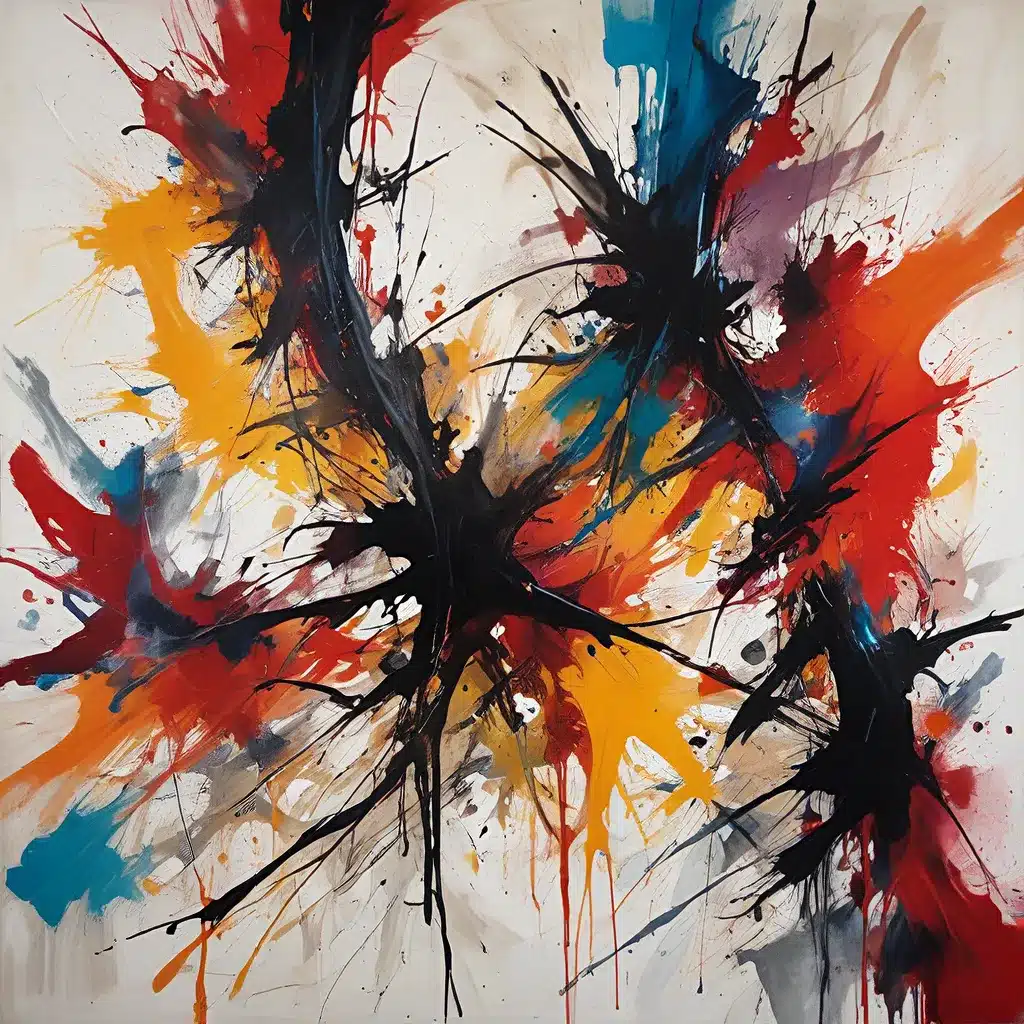
In the ever-evolving world of art, one genre has continuously captivated the hearts and minds of artists and art enthusiasts alike: Abstract Expressionism. This captivating style of painting, born in the mid-20th century, has left an indelible mark on the artistic landscape, challenging traditional notions of art and ushering in a new era of creative expression.
Unlocking the Beauty of Abstract Painting
At its core, Abstract Expressionism is a form of non-representational art that emphasizes the emotional and expressive qualities of the medium itself. Eschewing the strict adherence to realism or representational imagery, these artists embraced the power of spontaneous, gestural brushstrokes and the raw, visceral energy of paint on canvas.
One of the defining characteristics of Abstract Expressionism is the artists’ focus on the act of painting itself, rather than the final, finished product. This emphasis on the creative process gave rise to a diverse array of techniques, from the drip paintings of Jackson Pollock to the expansive, color-field canvases of Mark Rothko. Each artist in this movement developed their own unique style, united by a shared desire to capture the essence of emotion and the human experience through the medium of paint.
Exploring the Captivating World of Abstract Art
As we delve deeper into the world of Abstract Expressionism, we discover a rich tapestry of techniques, materials, and artistic philosophies that have influenced countless artists throughout the decades. From the bold, energetic strokes of Willem de Kooning to the meditative, color-driven compositions of Clyfford Still, each artist within this movement has left an indelible mark on the art world.
One of the most captivating aspects of Abstract Expressionism is the way in which it challenges the traditional boundaries of art. By eschewing representational imagery in favor of pure abstraction, these artists invited viewers to engage with the work on a deeper, more emotive level. The absence of recognizable forms compelled the audience to interpret the artwork through their own subjective experiences and personal connections, creating a dynamic and deeply personal dialogue between the art and the observer.
Mastering the Art of Non-Representational Painting
As artists, we can learn a great deal from the pioneering spirit of the Abstract Expressionists. Their willingness to experiment, to embrace the unpredictable, and to trust their instincts in the creative process serves as a powerful inspiration for artists of all levels. By immersing ourselves in the techniques and philosophies of this movement, we can unlock new avenues of artistic expression and cultivate a deeper understanding of the transformative power of paint.
One of the key techniques associated with Abstract Expressionism is the use of spontaneous, gestural brushstrokes. By embracing the physicality of the painting process and allowing the paint to flow freely across the canvas, artists can capture the raw energy and emotional intensity of their creative impulses. Experiment with different tools, such as palette knives, sponges, or even your hands, to create dynamic, expressive marks that convey a sense of movement and vitality.
Another essential element of Abstract Expressionism is the exploration of color and its emotive qualities. Artists like Mark Rothko and Clyfford Still utilized expansive fields of color to evoke profound emotional responses in their viewers. Experiment with bold, contrasting hues or subtle, harmonious palettes to create paintings that resonate on a deeper, more visceral level.
Embracing the Creative Process
One of the most valuable lessons we can learn from the Abstract Expressionists is the importance of embracing the creative process, rather than solely focusing on the final outcome. By allowing ourselves to be present in the moment, to experiment and take risks, we can unlock a newfound sense of freedom and spontaneity in our artistic practice.
As you embark on your own abstract painting journey, remember to let go of preconceptions and trust your instincts. Explore different mediums, such as acrylic paints, oil paints, or even mixed media, to discover the materials that best suit your unique style and expressive goals. Embrace the unpredictable nature of the creative process, and allow your paintings to evolve organically, responding to the unique energy and emotion you bring to each brushstroke.
| Material | Benefit | Considerations |
|---|---|---|
| Acrylic Paints | Fast-drying, versatile, and easy to work with, allowing for spontaneous, gestural brushwork. | May not offer the same depth and blendability as oil paints, but can be layered and mixed effectively. |
| Oil Paints | Offer rich, vibrant color and a longer drying time, which can be beneficial for blending and layering techniques. | Require more patience and preparation, as they take longer to dry and can be more labor-intensive. |
| Mixed Media | Allows for the incorporation of diverse materials, textures, and techniques, leading to unique and expressive artworks. | Requires experimentation and a willingness to step outside of traditional painting approaches. |
Cultivating Creativity and Inspiration
As you continue to explore the captivating world of Abstract Expressionism, remember that the true essence of this movement lies not in the mastery of specific techniques, but in the cultivation of a creative mindset. Embrace the spirit of spontaneity, trust your intuition, and allow your emotions to guide the flow of your brushstrokes. Surround yourself with inspiring works of art, both historical and contemporary, to ignite your creative spark and push the boundaries of your own artistic expression.
Remember, the journey of an artist is never complete; it is a constant process of discovery, growth, and self-expression. By immersing yourself in the rich history and captivating styles of Abstract Expressionism, you will undoubtedly unlock new avenues of creative exploration and deepen your understanding of the power of paint to transcend the boundaries of traditional art.
So, grab your brushes, unleash your inner Abstract Expressionist, and embark on a thrilling adventure of artistic discovery. The captivating world of abstract painting awaits.